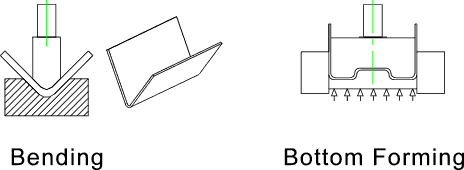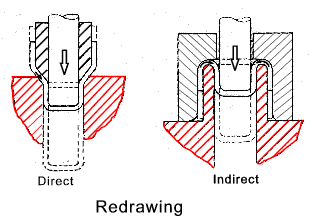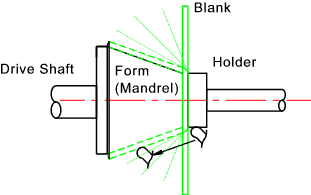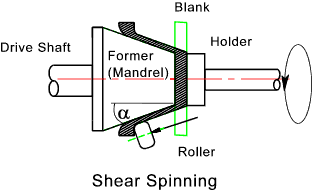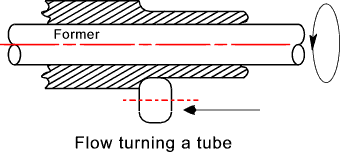|
|
|
Primary Processes Bending /Forming/ Deep Drawing and Spinning
|
Introduction The pressing and deep drawing operations are based on shaping sheet metal by plastic deformation. The deformation
is achieved by forcing the sheet metal into a formed female die using a male shaped punch. For the pressing
operations the process involves relatively shallow dies with little plastic flow of the sheet. For deep drawing
the die is relatively deep and significant plastic flow result. The simplest pressing process is
bending. Bending and forming The process of simple bending and forming using press tools is shown in the figure below.
Deep Drawing The important features of deep drawing are shown in the figure below. The pressure ring bears on the upper surface of the blank preventing wrinkling of the metal as it is drawn radially over the upper surface of the die. There is the option of applying pressure to the base of the cup using a pressure pad. Thinning results from this process, the worst being at the bottom radius as a result of drawing the full disc diameter inward under the pressure ring. The thinning is the least at the top of the cup
If the deep drawing process can not produce a cup sufficiently deep in one operation then it is possible to split the operation into a number of stages. Also a redrawing operation is used. The drawing process results in work hardening and therefore the component may need to be bright annealed between drawing operations. The redrawing operation is shown in the figure below. The indirect redrawing operation has the advantage over the direct one in that the material bending is all in one direction i.e. there is no bending-unbending ( as occurs in the direct method).
Spinning Spinning is the process of forming a circular shape e.g. a cone, hemisphere, deep cup, etc.
from a disc of sheet material by forcing it against a shaped former as the disc and former are rotated.
The mandrel is held on the drive headstock spindle. The forcing tool is controlled either
manually or using an electohydraulic drive system.
This process is ideal for low quantity ( ≤ 1000 ) processes or for production of prototype shapes. The process can be used for sections of 0,1 to 2m dia or more. Shear Spinning /Flow Turning In simple spinning the section of the formed is essentially the same as the disc. When shear spinning the maximum diameter of the formed section is the same as blank disc but the thickness of the formed section is substantially reduced compared to the blank disc. This process results in the final shape after one pass of the roller. This process results in significant shearing of the material being formed and high forces are required from the roller.
If T is the thickness of the blank disc and t is the thickness of the formed section then t = T sin α This process is also used in tube production as shown below. In this process the increase in length of the tube is directly related to the reduction in thickness. i.e if the thickness is reduced to 50% of the orginal tube thickness the length will be doubled
Most ductile materials can be formed using these processes including aluminium and copper, steel. Equipment Pressing operations and deep drawing operations are generally completed using mechanical
presses using flywheels to provide kinetic energy. Hydraulic presses are also used. |
Links Providing information on Drawing /Pressing/Forming
|
|
Manufacturing Index
Primary Processes
